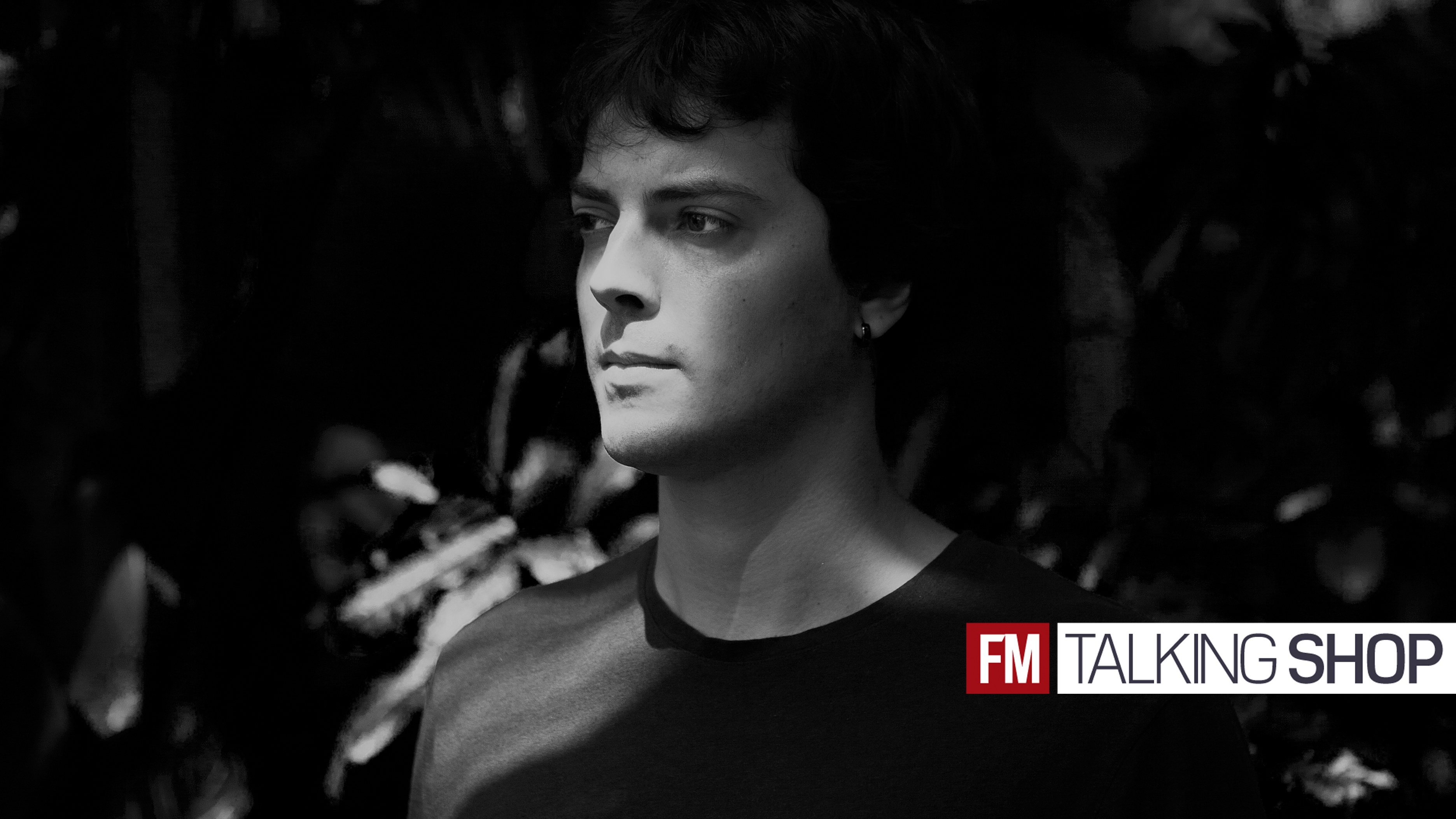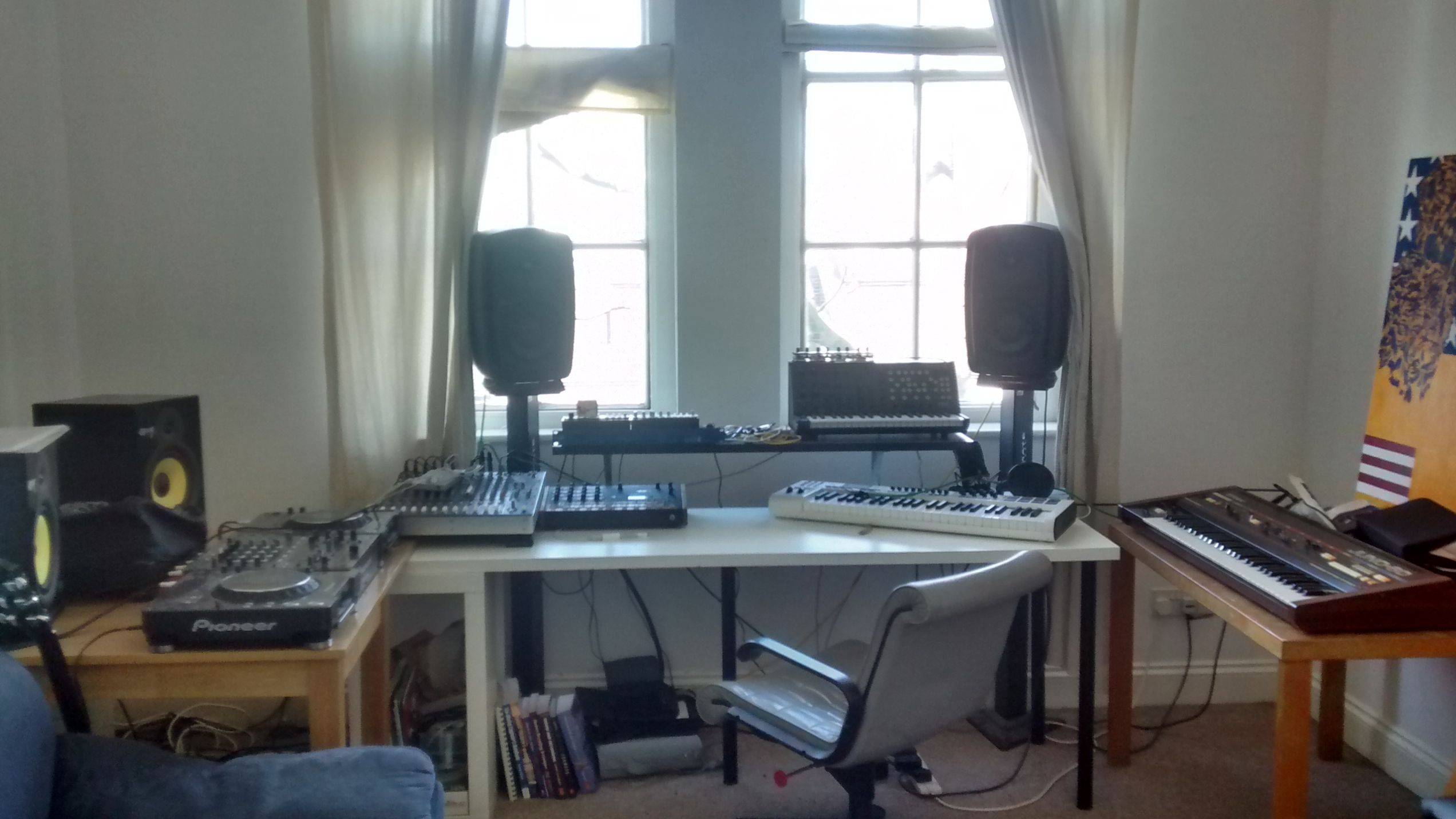Talking Shop: Hackman
The UK producer on the gear and ideas behind his sound

Since his debut release back in 2009, London-based producer Ben Hackman has slowly established himself as one of the most promising names amongst the UK's underground House circuit.
Following a sting of impressive EPs for the likes of Futureboogie, Greco-Roman and 20:20 Vision, he dropped his latest release, Semibreves, via Halocyan Records at the end of last month. FM caught up with Hackman to find out more about how his tracks come together...
When did you start making music, and how did you first get started?
"It must have been around 2007 when I first started making music. It wasn't serious at all, just for a bit of fun. I was just getting into electronic music properly for the first time, via DnB, and I was inspired enough to give it a go myself. At this point I was writing DnB purely with loops in GarageBand, or really bizarre, awful sounding sequenced tracks in Logic.
"My Dad has always been interested in music production, and used to have a small recording studio a while back. Due to this, we had a copy of Logic 6 in the house, and his Juno 60 as well, although I didn't see the value of that and start using it religiously until a few years later!"
Tell us about your studio/set-up
"My current set up is at home in the living room, though not much 'living' goes on in there. I've been in this one for a couple of months now. It's much better compared to my last studio, which was a bedroom studio and incredibly cramped. This new room sounds much better too.
Get the MusicRadar Newsletter
Want all the hottest music and gear news, reviews, deals, features and more, direct to your inbox? Sign up here.
"I use both hardware and soft synths/plug-ins as both have an important role to play in production. For processing I still use everything 'in the box,' mainly the Waves bundle, although I intend to buy some hardware when I can.
"I have a Juno 60, as I said, a Korg MS-20 mini, and a few other smaller micro synths that are more for fun than anything else. I also own a Jomox Xbase 999, which has really put the fun back into making drums for me.
"I have a huge list of hardware wants, but living in London I have to be a bit more careful with my spending than I used to be! I also use the Arturia soft synths a lot, as well as the default Logic ones."

What DAW (or DAWs) do you use, and why did you choose it?
"I currently use Logic X. I've been using Logic for several years, so I know my way around it really well, and can get things done quickly. It's just the one I started on, so makes sense to keep using it, and I don't have any big issues with it. Having used Ableton, Reason and Cubase a bit, Logic is definitely the best fit for me."
What one piece of gear in your studio could you not do without, and why?
"Aside from the obvious answer of my computer, I'd definitely now say my Event Opal monitors. I used to use KRK Rokits, and whilst I was able to get good results from them, the clarity provided by the Opals is something I could never go back from!"
What's the latest addition to your studio?
"It was probably a new AC adaptor for my MIDI interface. But the last interesting addition was four Patchblocks, which are programmable mini synth modules that you can connect together for different end results. I got them because it was a fairly cheap project to back on Kickstarter, and it seemed possible to get some pretty crazy end results from them! To my shame though, I haven't really found the time to properly explore their possibilities just yet."
What dream bit of gear would you love to have in you studio?
"Ah, so many things! I'd really like a Buchla system, a Fender Rhodes, a Jomox Sunsyn, a Metasonix D-1000, amongst loads of others. I think probably the best dream bit of "gear" would be a perfect studio space to own, so I wouldn't have to keep moving around every year or so!"
When approaching a new track or project, where do you start?
"It's always different for me. If I have an idea, it's usually melodic and not rhythmical so I will start with the melody or chord progression. I tend to begin this melodic idea on a Rhodes patch as a starting point, then move to a more appropriate patch later. If I don't have any idea, I'll start with the drums and build around them, or maybe sample something. I have enough hardware to have some pretty limited jam sessions, but I need to add to my collection in order to get more interesting results really."
What are you currently working on?
"My latest release is a 12" for Los Angeles based label Halocyan Records. I actually signed this released back in 2011, so it's a bit of a "blast from the past" compared to the other music I've been releasing in the last few years!
"Aside from that, there's a bunch of labels I really want to try get a release on, so at the moment my main project is getting an EP together to pitch to those labels in the hope of a release. I've also finished a few remixes recently, I'm writing some library music, and I'm pitching for adverts occasionally."
Hackman's essential production tips...
Use gates to make static sounds more interesting
"One way of making a simple sustained pad sound a lot more interesting is to add a gate, and have the gate being triggered by a drum loop (or anything really), which has no audio output. I find 2-Step Garage drum loops particularly good for this, as the swung potentially complex rhythms can create really amazing sounds with the pad. Adjust the parameters on the gate until the sustained pad is only sounding when the gate is triggered by the signal from the drum loop."
Make sure your mixdown sounds good at a low volume
"As someone who struggles with mixdowns, this piece of advice has been really useful for me. If at a low volume you can still hear everything coming through, it's generally going to translate well to louder volumes too. Also, mixing at a lower volume makes your ears less tired, thus making the end result better. Obviously still check to see if it sounds good really loud too."
Use tape saturation
"This is my favourite bit of processing to do, and is the best way of adding an 'analogue warmth' feel to your tracks, particularly if you are using only digital tools. It can be used on anything, but works especially well for adding a bit of extra grit and warmth to your drums. Saturation works by adding harmonics to the sound being processed, which causes natural compression and limiting. This makes the sound seem fatter and warmer, and gives that analogue feel."


Future Music is the number one magazine for today's producers. Packed with technique and technology we'll help you make great new music. All-access artist interviews, in-depth gear reviews, essential production tutorials and much more. Every marvellous monthly edition features reliable reviews of the latest and greatest hardware and software technology and techniques, unparalleled advice, in-depth interviews, sensational free samples and so much more to improve the experience and outcome of your music-making.
“I’m looking forward to breaking it in on stage”: Mustard will be headlining at Coachella tonight with a very exclusive Native Instruments Maschine MK3, and there’s custom yellow Kontrol S49 MIDI keyboard, too
“Turns out they weigh more than I thought... #tornthisway”: Mark Ronson injures himself trying to move a stage monitor










